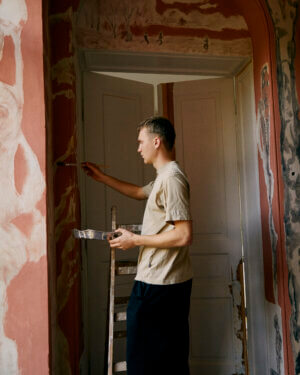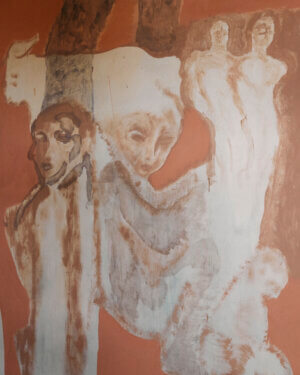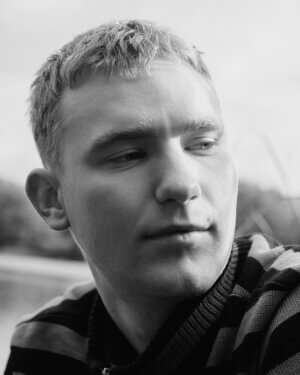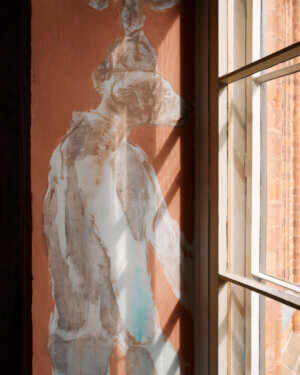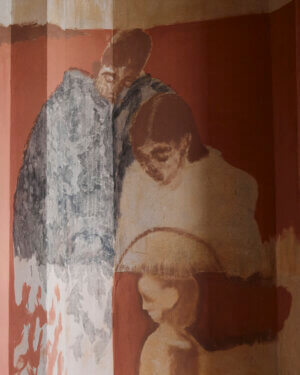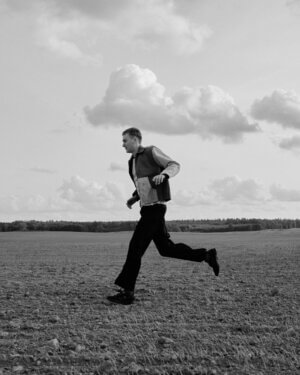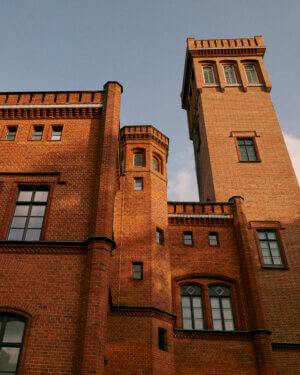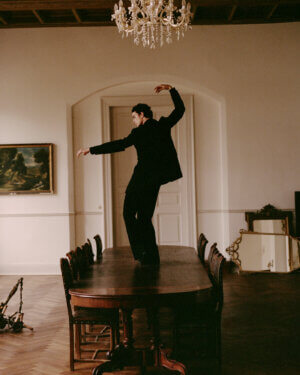The painterly world of Vilmer Engelbrecht is as rough around the edges as it is ephemeral and dream-like. In muted, earthy tones, his figures and landscapes are psychologically intense, often heavy in symbolism, and yet simple in their timelessness. Born in 2000 in Copenhagen, Engelbrecht recently enrolled in the Düsseldorf art academy, where professor Peter Doig counts among the young painter’s influences, alongside modernist masters such Edvard Munch, Edgar Degas and Paul Cézanne. In collaboration with the Berlin gallery Cabin, we commissioned him to create a mural at our Prussian manor house, Arnesse. And late last summer, while immersed in the quiet of the still-unfinished countryside estate, Engelbrecht filled the walls of one of the salons with otherworldly creatures and celestial bodies, drawing inspiration from the surrounding nature and historical architecture. His interest is in the mystical power of nature, the ineffability of time and the frailty of memory – concerns that echoed through our conversation when we met up to discuss his latest work.
Work in Progress
Vilmer Engelbrecht’s Dreamlike Painterly World
Continuing our series of conversations with contributors to the world of Slowness, we speak to the Danish artist Vilmer Engelbrecht, who recently spent two solitary weeks at Arnesse, our Prussian manor house opening next year in the Uckermark, creating a mural that leaves the room in limbo between past, present and future.
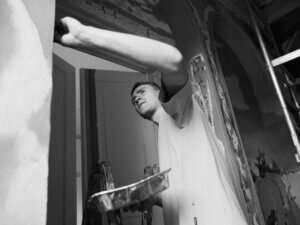
- Photography Jose Cuevas
Continuing our series of conversations with contributors to the world of Slowness, we speak to the Danish artist Vilmer Engelbrecht, who recently spent two solitary weeks at Arnesse, our Prussian manor house opening next year in the Uckermark, creating a mural that leaves the room in limbo between past, present and future.
- Photography Jose Cuevas
“I didn’t plan the motifs ahead of time, but found that they were in the walls already. On the first day I saw the outline of a figure here and then another figure there – they created themselves in a way. I started with the red colour, traces of yellow and blue were already there, and I just worked them into the picture. So you could say that it was the the walls that made the piece, I just listened, observed, and responded.”
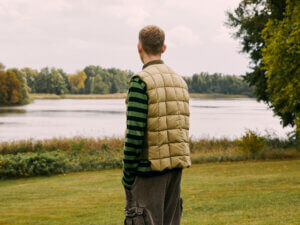
“I’ve felt completely immersed in the place, looking out of the windows, going for walks around the lake. The main theme of this work is nature, so in that way being here has been an inspiration. You walk for thirty seconds into the forest, and it’s a whole other atmosphere.”
“I really like the idea of metamorphosis: bodies turning into trees, animals with human heads. How everything merges and connects. I also painted Icarus, flying towards the sun, as well as the cycles of the moon. I guess the central question I’m posing is to do with how humans try to understand the world by mirroring it, for instance through art.”
10317 Berlin, Germany
1100-383 Lisbon, Portugal
